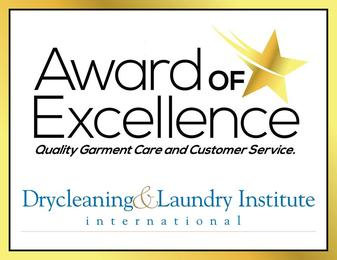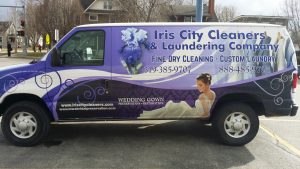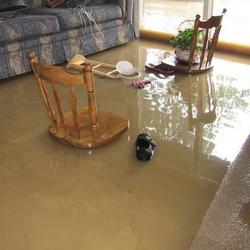 An Award of Excellence Dry Cleaner since 2005
An Award of Excellence Dry Cleaner since 2005

 An Award of Excellence Dry Cleaner since 2005
An Award of Excellence Dry Cleaner since 2005


The Centers for Disease Control (CDC) recommend discarding contaminated garments resulting from sewage spills, groundwater runoff, or water from rivers or streams if they cannot be thoroughly cleaned and dried. These items remain a source of microbial growth. Due to the amount of mold growth, very dark stains and large stains probably won't be removed by any process.
Wear gloves when handling items contaminated with mildew or floodwater. When handling grossly contaminated items, wear goggles and an organic respirator in addition to gloves. Discard textile items such as pillows, stuffed toys, or clothing that have been in floodwater for weeks. The odors and contaminants may be so embedded in the items that they cannot be successfully cleaned.
Mold and fungal growth can damage many fabrics. The affected areas may lose strength and will be further damaged by any mold removal process. However, fibers and fabrics don't respond to mold in the same way - reactions vary by type.
The first step is to separate salvageable items that cannot be washed from those that are washable. Wear gloves when handling these items. For items that can't be washed, see the section on cleaning non-washable clothes and household textiles on the second page of this fact sheet. For washable items, do the following:
The following are recommendations for washing salvageable, washable clothing and household textiles.
1. Be sure water supply is clean and safe.
2. Use hot water, the recommended amount of heavy-duty laundry detergent, and 1/2 cup of water conditioner sold in grocery stores.
3. Do not overload the washer.
4. Use a disinfectant in wash water to kill bacteria, mildew, and other microorganisms. According to the CDC, the word "disinfectant" and an EPA registration number must appear on a cleaning product label if the product meets the standards required as an effective disinfectant.
5. Use chlorine bleach if safe for fibers and dyes of fabric. Chlorine bleach can cause rust stains to appear on fabrics if there is a large amount of iron in soil deposits or water. Fill the washer with water and add the bleach before putting in the laundry, or use the automatic bleach dispenser on the washer.
6. If chlorine bleach is not safe to use with some of the textile items, use another type of disinfectant, such as one of the pine oils or other types of disinfectant products. Look for brands that carry a manufacturer label statement indicating the product is safe to use for laundering textile items.
7. Wool,spandex,nylon,and silk fibers are damaged by chlorine bleach. Hydrogen peroxide may help remove stains if the item can handle cleaning in water.
8. Never mix bleach with ammonia or ammonia-based cleaning products - the combination creates toxic fumes.
9. Work in a well-ventilated area when using any cleaning product.
10. Use the regular wash cycle and high water levels. For permanent press or synthetic fabrics, use the permanent press cycle.
11. The heat of tumble-drying also helps kill germs, so tumble dry items on the regular drying cycle. If drying in automatic dryer may cause excess shrinkage, hang these items in the sun to dry.
12. Use appropriate detergents and safe disinfectantsfor items that require hand laundering.
13. Ironing also helps kill germs on cellulose-based fabrics (cotton, linen, ramie, rayon) and blends of cellulose fibers with synthetic fibers (polyester/cotton).Steam pressing helps kill germs in items that are air dried away from the sun.
After separating out the items that cannot be washed, do the following:
The solvents used in dry cleaning, the flushing action, and the steam used in the finishing process are effective in reducing bacteria to safe levels. However, dry cleaning alone will not remove water-soluble impurities left in the items or the stains caused by mildew or fungal growth. Therefore, full restoration may be impossible on these items. Treatment with ozone will also kill fungal growth, but the remaining stains will require additional treatment.
The U.S. Department of Agriculture's Textile and Clothing Laboratory has identified four categories of products that can be used to disinfect home laundry. Follow the manufacturers recommendations for use and be sure that the product is designed to be used for laundry.
1. Pine oil disinfectants such as Pine Sol, Real Pine, Spic-n-Span and Lysol Pine Action. They should be added at the beginning of the wash cycle.
2. Phenolic disinfectants such as Lysol.
3. Chlorine bleach.
4. Quaternary disinfectants aren't as readily available as other products. One example is Amway's Pursue.
Send us your email address, if you would like to receive monthly online coupons.